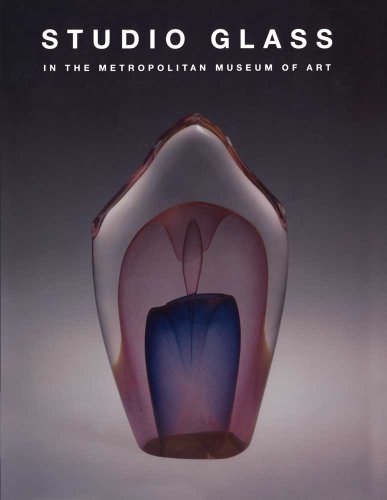

Most ebook files are in PDF format, so you can easily read them using various software such as Foxit Reader or directly on the Google Chrome browser.
Some ebook files are released by publishers in other formats such as .awz, .mobi, .epub, .fb2, etc. You may need to install specific software to read these formats on mobile/PC, such as Calibre.
Please read the tutorial at this link: https://ebookbell.com/faq
We offer FREE conversion to the popular formats you request; however, this may take some time. Therefore, right after payment, please email us, and we will try to provide the service as quickly as possible.
For some exceptional file formats or broken links (if any), please refrain from opening any disputes. Instead, email us first, and we will try to assist within a maximum of 6 hours.
EbookBell Team

0.0
0 reviewsIn 1961 and 1962 artist Harvey K. Littleton, a professor of fine arts at the University of Wisconsin and son of the director of research at the Corning Glass Works, held a series of informal workshops to explore the art of hot glassmaking in a studio setting. Until then, almost without exception, glass objects had been blown or molded in an industrial context—that is, they were factory made. In the 1870s, the French designer Emile Gallé had made a radical change in the prevailing attitude toward glass as art by being the first modern artist to sign his work, just as painters and sculptors did. Nevertheless, art glass continued to be blown in factories, such as Orrefors in Sweden, Tiffany in the United States, and Lalique in France. In the 1960s, Littleton became convinced, after visiting a few European glassmakers working alone, that an artist could maintain a complete glassmaking facility within a studio; thanks to his determination and the creation of a low-melting glass formula by artist Dominick Labino, the studio glass movement was born.
Progress was so swift that when, a decade later, The Metropolitan Museum of Art established a department devoted to the arts of the twentieth century, its curators sought out not only the innovative glass art of Harvey Littleton and Dominick Labino, but also the work of such emerging artists as Dale Chihuly, Michael Glancy, and Jon Kuhn. Glass art had arrived. During the 1970s, in both Europe and the United States, the liberal political and social climate encouraged a new freedom in artistic expression. Artists who wanted to work in the medium of glass could take courses in colleges and universities and even graduate with a degree in glassmaking. Dale Chihuly, whose masterworks in glass and remarkable enthusiasm helped establish glass in the art world, founded the Pilchuck School near Seattle, devoted solely to the making of glass art and to teaching the various techniques available to artists. Experiments in abstract sculpture